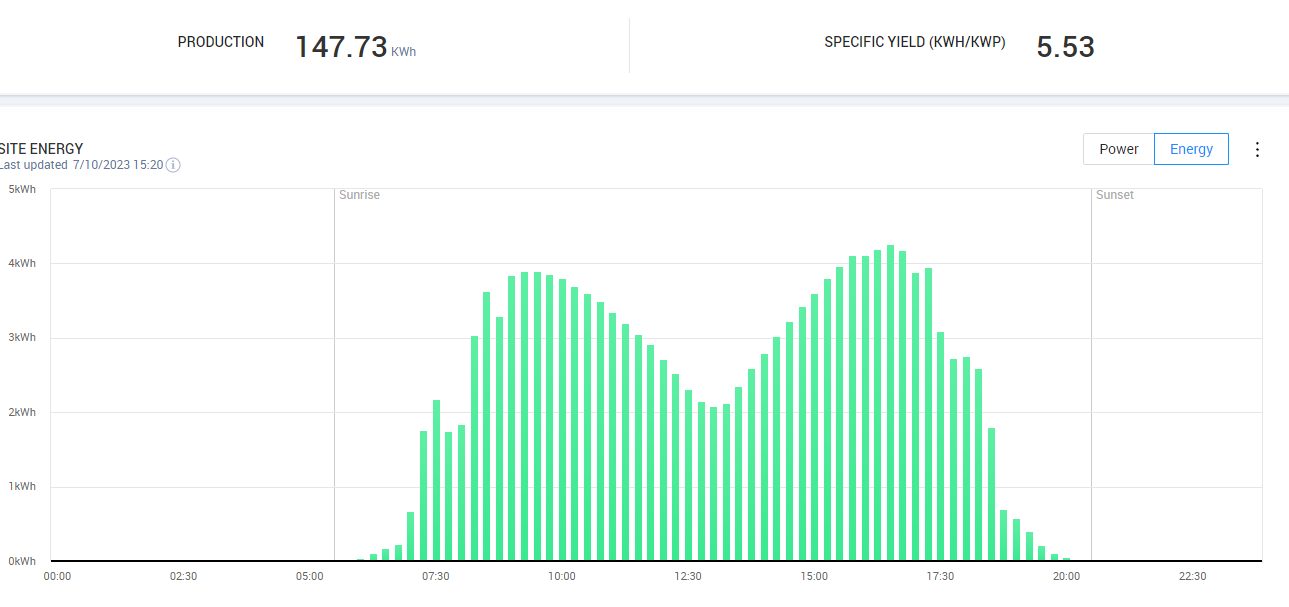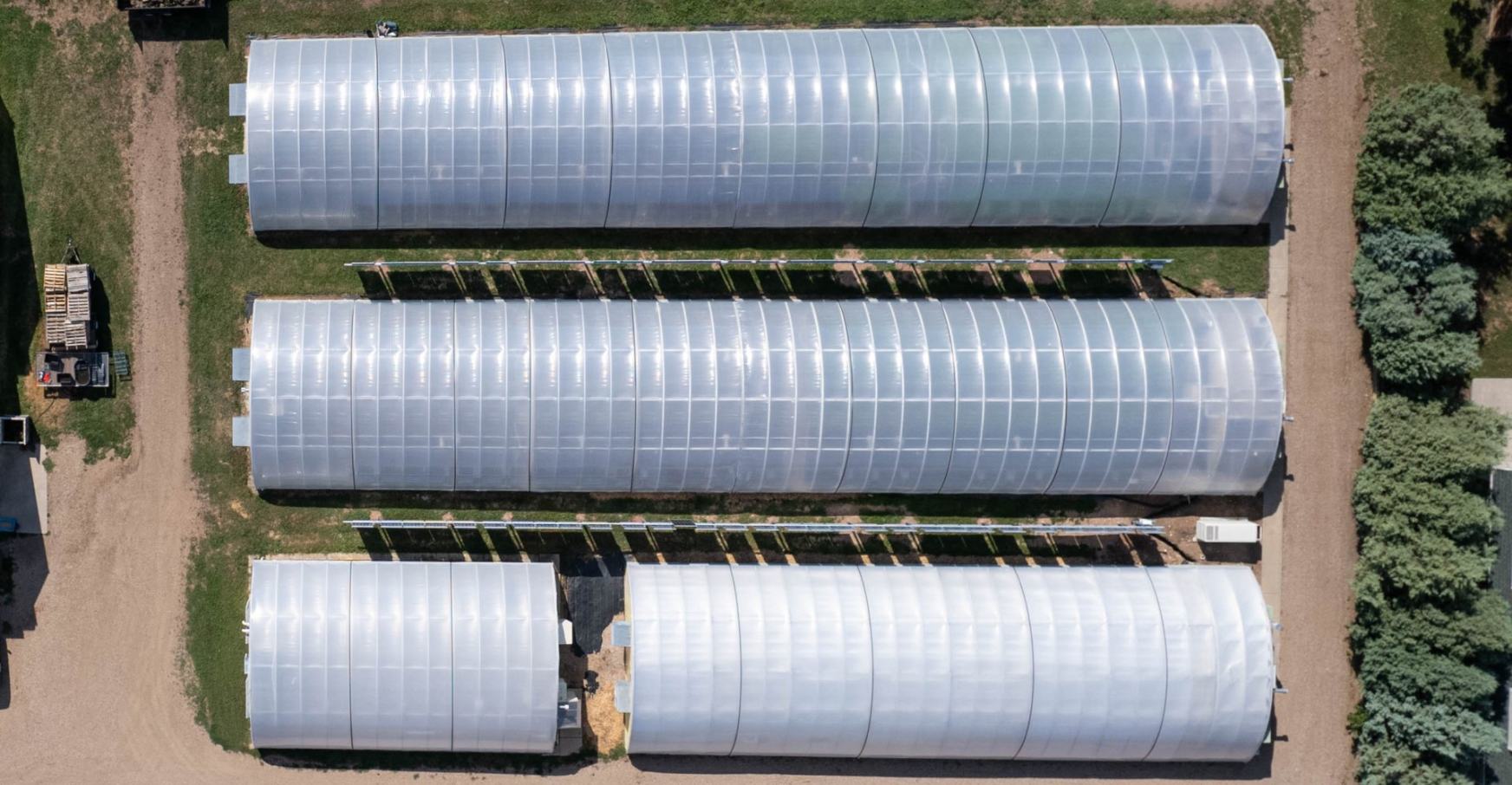Even in non-traditional orientations solar panels can provide a cost-effective and environmentally friendly energy solution when strategically installed.
This principle is currently being showcased by Spring Hill Greens, a Colorado-based farming operation nestled between two greenhouses. Their unique vertical bifacial solar panel system optimizes land use while potentially capitalizing on the high albedo effect of the highly reflective greenhouse materials.
We get morning sun and evening sun but during the day we also get reflection off the buildings which we hope will produce a significant amount of solar–Tom, from Spring Hill Greens Farm in Fort Collins

The system’s design and installation were handled by Sandbox Solar. While they don’t yet have a tool to fully measure the albedo effect without a control vertical system, the company has commenced experiments to provide further insights into generation curves.
Ian Skor, owner of Sandbox Solar noted that the production on snowy days is dramatically higher than any other installation. The project’s peak generation periods are at 9 a.m. and 4 p.m., which Skor likened to a “reverse duck curve”.
To help design and simulate the generation curves of the facility prior to construction, Sandbox Solar employed their inhouse software, SPADE Agrivoltaic.
Preliminary data shows promising results. During the months of September through April, the vertical bifacial system produced 559.28 kWh/kWp. This performance surpasses that of a nearby east-west rooftop system owned by Spring Hill by 14%, which produced 489.93 kWh/kWp. However, it falls behind a south-facing ground mount project, also a Spring Hill property, which achieved an output of 857 kWh/kWp, by 34%.

Denver-based Greentech Renewable provided the hardware for the project, which includes Canadian Solar 445 W BiHiKu bifacial solar modules, SolarEdge 11.4 240V single-phase inverters, p505 rail mounted optimizers, and Tamarack bifacial vertical solar fence racking.
Acknowledging the customer’s initial desire to maximize land use, Skor commented, “My summary is that the system saves dramatically on footprint and can increase the number of usable project areas. The production during snowy days is dramatically higher than any other installation. This application may work extremely well in northern climates that experience significant snowfall.”
This content is protected by copyright and may not be reused. If you want to cooperate with us and would like to reuse some of our content, please contact: editors@pv-magazine.com.








By submitting this form you agree to pv magazine using your data for the purposes of publishing your comment.
Your personal data will only be disclosed or otherwise transmitted to third parties for the purposes of spam filtering or if this is necessary for technical maintenance of the website. Any other transfer to third parties will not take place unless this is justified on the basis of applicable data protection regulations or if pv magazine is legally obliged to do so.
You may revoke this consent at any time with effect for the future, in which case your personal data will be deleted immediately. Otherwise, your data will be deleted if pv magazine has processed your request or the purpose of data storage is fulfilled.
Further information on data privacy can be found in our Data Protection Policy.